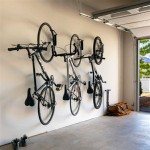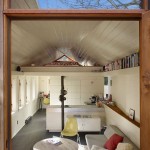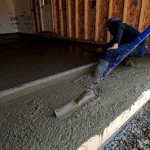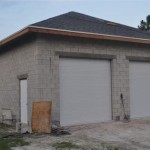Building A Home Gym In Your Garage: A Comprehensive Guide
Transforming a garage into a functional home gym is an increasingly popular choice for individuals seeking convenient access to fitness equipment and a dedicated workout space. This conversion requires careful planning and execution to ensure optimal usability, safety, and longevity of the gym. This article provides a comprehensive guide to building a garage gym, covering essential considerations from initial planning to equipment selection and installation.
Assessing Your Garage Space: Foundations for a Successful Gym
The first step in building a garage gym is a thorough assessment of the existing space. This assessment should encompass several key aspects, including the garage's dimensions, structural integrity, and existing utility infrastructure. Measuring the length, width, and height of the garage is paramount for determining the available floor space and vertical clearance, influencing equipment selection and layout. Sufficient headroom is crucial for performing exercises such as overhead presses, pull-ups, and plyometric movements.
Evaluating the structural integrity of the garage floor is equally important. Standard garage floors are typically concrete slabs, but their thickness and condition can vary. Evaluate the floor for cracks, unevenness, or signs of damage that could compromise its ability to support heavy equipment, such as weight racks, platforms, and treadmills. If the floor exhibits significant damage, consider reinforcing it before installing any equipment. Options include applying a self-leveling compound to create a smooth surface or adding extra layers of concrete for increased load-bearing capacity.
The availability of electrical outlets is another critical consideration. Power outlets are essential for operating equipment such as treadmills, ellipticals, televisions, and sound systems. Determine the number and location of existing outlets and assess whether they can accommodate the electrical load of your intended equipment. If the existing electrical infrastructure is insufficient, consult a qualified electrician to install additional outlets or upgrade the electrical panel to meet the power demands of the gym.
Finally, consider the garage's insulation and ventilation. Garages are often poorly insulated, leading to uncomfortable temperatures during extreme weather conditions. Installing insulation in the walls and ceiling can help regulate temperature and reduce energy consumption if you plan to use heating or cooling systems. Adequate ventilation is also crucial for maintaining air quality and preventing the buildup of moisture and odors. Consider installing a ventilation fan or opening windows to ensure proper air circulation during workouts.
Selecting and Installing Gym Flooring: Protecting Your Garage and Enhancing Performance
The flooring in a garage gym is more than just a surface; it’s a critical component that protects the existing concrete slab, absorbs impact, reduces noise, and provides a comfortable and safe workout environment. Selecting the appropriate flooring material depends on the type of exercises you plan to perform and the weight capacity requirements.
Popular flooring options for garage gyms include rubber flooring, foam tiles, and interlocking mats. Rubber flooring is a durable and resilient option that can withstand heavy weights and impacts. It is available in various thicknesses and can be installed as individual mats, rolls, or interlocking tiles. Rubber flooring provides excellent shock absorption, protecting the concrete floor from damage and reducing noise transmission. It is also relatively easy to clean and maintain.
Foam tiles are a more affordable option that provides cushioning and comfort. They are lightweight and easy to install, making them suitable for smaller gyms or areas where heavy weights are not frequently used. However, foam tiles are less durable than rubber flooring and may not be able to withstand heavy impacts or prolonged use. They are also more susceptible to tearing or puncturing.
Interlocking mats offer a versatile and customizable flooring solution. They are available in various materials, including rubber, foam, and PVC, and can be easily assembled and disassembled. Interlocking mats provide a seamless and uniform surface that is comfortable to walk and exercise on. They also offer good shock absorption and noise reduction. However, interlocking mats may be more susceptible to shifting or separating under heavy use. Proper installation is crucial to ensure a secure and stable surface.
Before installing any flooring, ensure that the existing concrete slab is clean, dry, and level. Fill any cracks or holes with concrete patch and apply a self-leveling compound if necessary. Once the surface is prepared, install the flooring according to the manufacturer's instructions. For rubber flooring rolls, use a heavy-duty adhesive to secure the flooring to the concrete slab. For interlocking mats, align the edges and press them firmly together to create a tight seal.
Essential Equipment Selection: Tailoring Your Gym to Your Fitness Goals
The selection of fitness equipment is a fundamental aspect of building a garage gym. The equipment should be chosen based on individual fitness goals, available space, and budget considerations. A well-equipped garage gym can facilitate a wide range of exercises, including strength training, cardiovascular workouts, and flexibility training.
For strength training, essential equipment includes a weight rack, barbell, weight plates, adjustable dumbbells, and a bench. A weight rack provides a safe and stable platform for performing exercises such as squats, bench presses, and overhead presses. A barbell and weight plates are essential for building strength and muscle mass. Adjustable dumbbells offer versatility and allow you to perform a variety of exercises with varying resistance levels. A bench is necessary for performing bench presses, dumbbell rows, and other exercises.
For cardiovascular workouts, consider investing in a treadmill, elliptical, or stationary bike. These machines provide a convenient and effective way to improve cardiovascular fitness and burn calories. A treadmill is a versatile option that allows you to walk, jog, or run indoors. An elliptical provides a low-impact workout that is easy on the joints. A stationary bike is a good option for individuals who prefer a seated workout.
For flexibility training, consider incorporating exercise mats, resistance bands, and a foam roller into the gym. Exercise mats provide a comfortable surface for performing stretching and yoga exercises. Resistance bands offer a versatile way to add resistance to various exercises and improve flexibility. A foam roller can be used to massage muscles and release tension.
When selecting equipment, prioritize quality and durability. Invest in equipment that is built to withstand heavy use and will last for years to come. Consider purchasing used equipment to save money, but be sure to inspect it carefully for signs of damage or wear. Ensure that the equipment is properly assembled and maintained to ensure safety and longevity.
Optimizing Space and Organization: Maximizing Functionality and Safety
Effectively organizing and optimizing space is crucial for creating a functional and safe garage gym. A well-organized gym allows for efficient workouts and minimizes the risk of injuries. Consider several strategies for maximizing space and organization:
Utilize vertical space by installing shelves, racks, and hooks to store equipment and accessories. Shelves can be used to store weights, dumbbells, and medicine balls. Racks can be used to store weight plates and barbells. Hooks can be used to hang resistance bands, jump ropes, and other accessories.
Implement a designated workout area for each type of exercise. This helps to prevent clutter and ensures that you have enough space to perform each exercise safely and effectively. For example, create a designated area for strength training, cardiovascular workouts, and flexibility training.
Invest in storage containers to organize smaller items such as resistance bands, jump ropes, and yoga blocks. Storage containers help to keep these items organized and prevent them from getting lost or damaged.
Keep the gym clean and clutter-free. Wipe down equipment after each use and sweep or vacuum the floor regularly. A clean and clutter-free gym is more inviting and encourages regular workouts.
Consider using wall-mounted mirrors to improve your form and technique. Mirrors allow you to see yourself as you exercise, which can help you to identify and correct any errors in your form. Mirrors also make the gym feel larger and more spacious.
Lighting, Ventilation, and Entertainment: Enhancing the Workout Environment
Creating a motivating and enjoyable workout environment is essential for maintaining consistency and achieving fitness goals. Lighting, ventilation, and entertainment play critical roles in enhancing the overall gym experience.
Adequate lighting is crucial for safety and visibility. Garages often have limited natural light, so consider installing additional lighting fixtures to brighten the space. LED lights are a good option because they are energy-efficient and provide bright, even illumination. Consider installing task lighting over specific workout areas, such as the weight rack or treadmill.
Proper ventilation is essential for maintaining air quality and preventing the buildup of moisture and odors. Install a ventilation fan or open windows to ensure adequate air circulation during workouts. Consider using an air purifier to remove dust, pollen, and other allergens from the air.
Entertainment can help to make workouts more enjoyable and engaging. Consider installing a television or sound system to listen to music or watch videos while you exercise. A motivational playlist or an engaging workout video can help to keep you motivated and focused.
Personalize the gym with motivational posters, artwork, or plants. Creating a space that you enjoy spending time in will encourage you to workout more often.
By carefully considering these aspects, you can transform your garage into a functional, safe, and motivating home gym that meets your specific fitness needs and goals.

Transforming An Empty Garage Into My Home Gym Setup

How To Create A Fitness Garage Gym In Your Home Schroeder Design Build

Our New Home Gym Separate Building In Backyard Nesting With Grace

The Ultimate Guide To Building A Budget Home Gym 2024

Our Garage Home Gym Makeover Before And After Lara Casey

Creating Your Own Home Gym

The Ultimate Guide To Building A Budget Home Gym 2024

Home Gym In The Garage Bunnings Work Community

Why You Should Create A Home Gym

How To Build Out A Garage Gym
Related Posts








